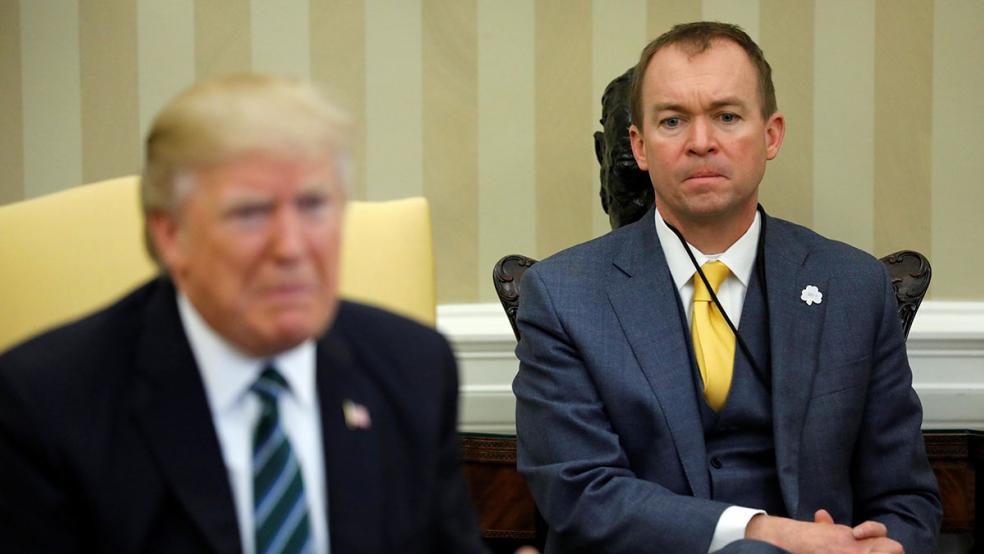On Monday, the Trump administration will announce the launch of a new team within the White House dedicated to a massive overhaul of the federal bureaucracy, using ideas from the private sector to improve the efficiency of the government’s operations. The Washington Post, which broke the story, reported the White House Office of American Innovation will be run by President Trump’s son-in-law, Jared Kushner, a senior adviser to the president whose crowded portfolio also includes managing relations with China, negotiating Middle East peace, and more.
The administration sees the new office as a sort of “SWAT team” with broad license to restructure the federal bureaucracy, according to The Post. In a statement to the paper, the president said, “All Americans, regardless of their political views, can recognize that government stagnation has hindered our ability to properly function, often creating widespread congestion and leading to cost overruns and delays. I promised the American people I would produce results, and apply my ‘ahead of schedule, under budget’ mentality to the government.”
Related: Trump’s Government Reorganization: Hatchet Job, or Just Major Surgery?
There is no question that if the new innovation office were to begin looking at federal agencies today, it would find extraordinary inefficiency, gridlock and paralysis. However, some of that is the fault of the new administration itself, which has fallen far behind in the task of appointing senior officials to the top ranks of federal agencies.
At the Justice Department, lawyers charged with enforcing existing criminal statutes have been told that in certain areas of law, previous guidance from the Obama administration is no longer operative. However, they complain that they can’t get clarity from the administration on new instructions and that, in many cases, they have nobody to ask.
The top ranks of the State Department are likewise notably empty of people who can credibly claim to speak for the new administration. At the Pentagon, Defense Secretary James Mattis has on more than one occasion reportedly appeared in the offices of mid-level subject matter experts seeking to be briefed on topics that would normally be the responsibility of under-secretaries several steps down the organizational chart.
The Partnership for Public Service claims there are about 1,200 positions in the federal government that require a presidential appointee to be confirmed by the Senate. The Partnership calculates that 553 of those positions are “key” to having an executive branch that can function at a basic level.
Related: Campaign Issues Dominate, But Who’s Ready to Govern?
As of today, Trump has nominated 61 people to those key jobs, or about 11 percent of the openings. As a result of Senate Democrats’ resistance, the failure of nominees to make timely disclosures to the Office of Government Ethics, and the decisions of several nominees to withdraw from consideration, only 20 people have been confirmed.
At this stage, multiple executive branch departments have had no top-level political appointees named at all beyond the cabinet secretaries.
At the State Department, Secretary Rex Tillerson has no permanent deputy, assistant secretaries or undersecretaries. At Defense, Mattis is likewise without any top-level aides, though in his case some were finally nominated earlier this month. (On the downside, prospective secretaries of the Army and the Navy have both withdrawn as candidates.)
The story is the same at multiple other agencies. The Departments of Education, Energy, Housing and Urban Development, Veterans Affairs, Interior, all have no senior level nominees below the secretaries. The same is true at the Office of the Director of National Intelligence.
Related: Why All the Ethical Problems of Trump’s Cabinet Nominees Won’t Matter
Agencies where a handful of top posts have been filled, like the Departments of Justice, Homeland Security, and the Treasury, are still facing long lists of key positions for which no nominees have been named, much less confirmed.
To be sure, no president in recent memory has staffed up an administration at a pace that can be described as “rapid.” Several, including the Obama administration, have had a handful of key positions still open almost a year into their terms. But the Trump administration is lagging far behind even its immediate predecessor in sending names to the Senate for confirmation.
Senior figures in the administration, particularly White House Chief Strategist Steve Bannon, have trumpeted their plans to “deconstruct” much of the federal bureaucracy, and perhaps the apparent reluctance to fill top positions reflects a desire to slim the ranks of the top level federal workforce.
But it also means that when Kushner’s team parachutes into a federal agency looking for dysfunction and paralysis, one of its first orders of business will be trying to discern how much of it is of this administration’s own making.





